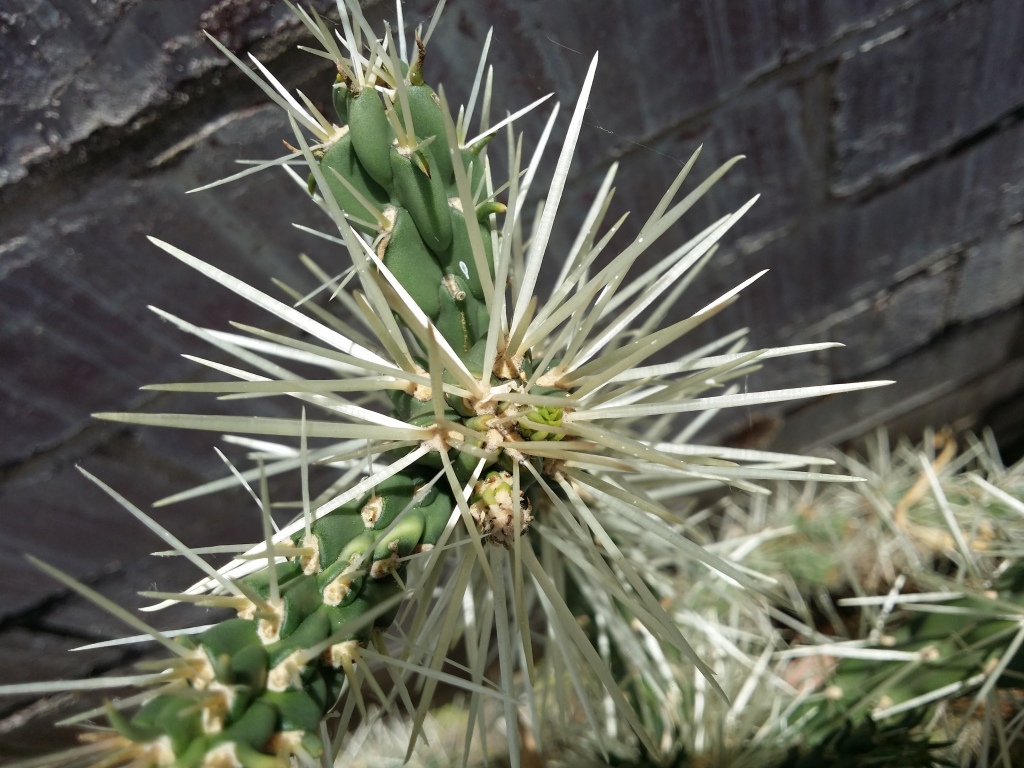Cylindropuntia pallida
(Rose) F. M. Knuth White-spined Hudson PearLow rounded or erect spreading shrub to 0.5–1(–2) m high, much-branched above the cylindric (to c. 10 cm diam.), woody trunk. Terminal cladodes cylindric, tuberculate, 4.5–30 cm long, 1.5–3.5 cm diam., glabrous, dark green to grey-green; tubercles prominent, 1.5–2 cm long, 5–9 mm wide, 5–12 mm high; areoles 1–3 cm apart, apical on tubercles, filled with short dense white or pale yellowish brownish wool and small yellow glochids; spines 7–14 per areole, spreading, 3–5 cm long, 0.2–0.5 mm wide near base, white to pale cream, each covered by a papery, white (or occasionally pale brown near cladode apex), aging pale yellow in dried specimens, sheath 1–2 mm diam. Flowers 3.5–4 cm diam.; sepaloids reddish; petaloids spreading, thulian pink; staminal filaments thulian pink, anthers pale yellow; style magenta, stigmas pale yellow to white; hypanthium tuberculate. Fruit solitary, very rarely maturing, obovoid, deeply depressed at apex, very rarely maturing, 3.0–3.5 cm long, 1.5–2.5 cm diam., strongly tuberculate, with few deciduous spines, green to yellow, dry. Seeds usually not developed, but when developed are sterile. Flowers late spring–summer.
MuM. Also naturalised in WA, SA, NT, Qld., NSW. Native to Mexico. In Victoria, Cylindropuntia pallida is known from a single collection near Ouyen, where growing in mallee scrub.
 Spinning
SpinningSynonyms
Anderson, E.F. (2001). The Cactus Family. Timber Press.
Chinnock, R.J. (2015). Feral opuntioid cacti in Australia: Part 1. Cylindrical-stemmed genera: Austrocylindropuntia, Cylindropintia and Corynopuntia. State Herbarium of South Australia.




